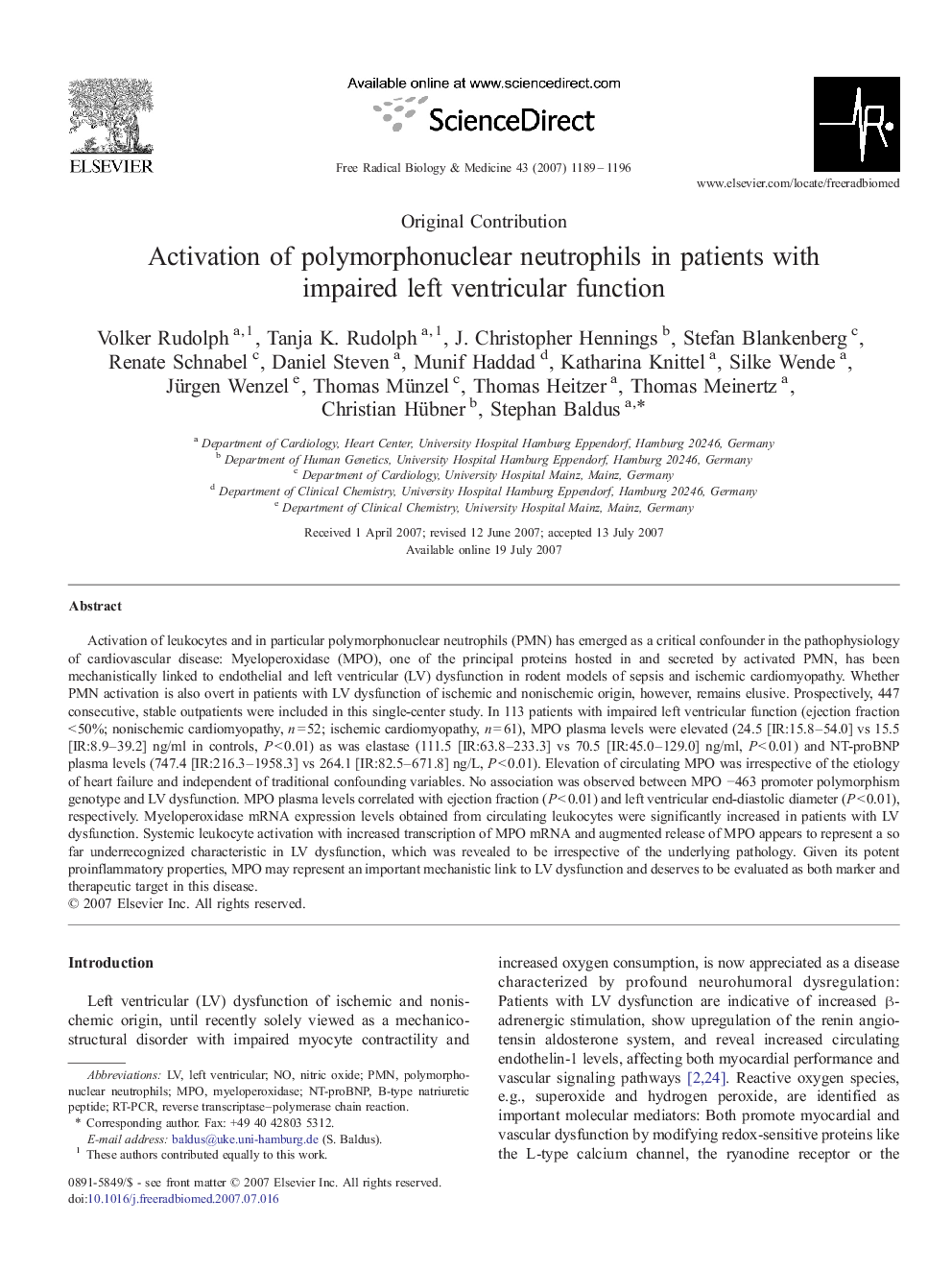| Article ID | Journal | Published Year | Pages | File Type |
|---|---|---|---|---|
| 1911609 | Free Radical Biology and Medicine | 2007 | 8 Pages |
Activation of leukocytes and in particular polymorphonuclear neutrophils (PMN) has emerged as a critical confounder in the pathophysiology of cardiovascular disease: Myeloperoxidase (MPO), one of the principal proteins hosted in and secreted by activated PMN, has been mechanistically linked to endothelial and left ventricular (LV) dysfunction in rodent models of sepsis and ischemic cardiomyopathy. Whether PMN activation is also overt in patients with LV dysfunction of ischemic and nonischemic origin, however, remains elusive. Prospectively, 447 consecutive, stable outpatients were included in this single-center study. In 113 patients with impaired left ventricular function (ejection fraction < 50%; nonischemic cardiomyopathy, n = 52; ischemic cardiomyopathy, n = 61), MPO plasma levels were elevated (24.5 [IR:15.8–54.0] vs 15.5 [IR:8.9–39.2] ng/ml in controls, P < 0.01) as was elastase (111.5 [IR:63.8–233.3] vs 70.5 [IR:45.0–129.0] ng/ml, P < 0.01) and NT-proBNP plasma levels (747.4 [IR:216.3–1958.3] vs 264.1 [IR:82.5–671.8] ng/L, P < 0.01). Elevation of circulating MPO was irrespective of the etiology of heart failure and independent of traditional confounding variables. No association was observed between MPO −463 promoter polymorphism genotype and LV dysfunction. MPO plasma levels correlated with ejection fraction (P < 0.01) and left ventricular end-diastolic diameter (P < 0.01), respectively. Myeloperoxidase mRNA expression levels obtained from circulating leukocytes were significantly increased in patients with LV dysfunction. Systemic leukocyte activation with increased transcription of MPO mRNA and augmented release of MPO appears to represent a so far underrecognized characteristic in LV dysfunction, which was revealed to be irrespective of the underlying pathology. Given its potent proinflammatory properties, MPO may represent an important mechanistic link to LV dysfunction and deserves to be evaluated as both marker and therapeutic target in this disease.
